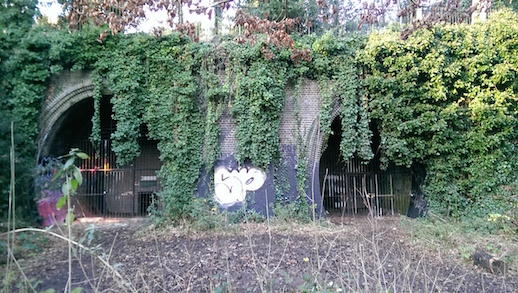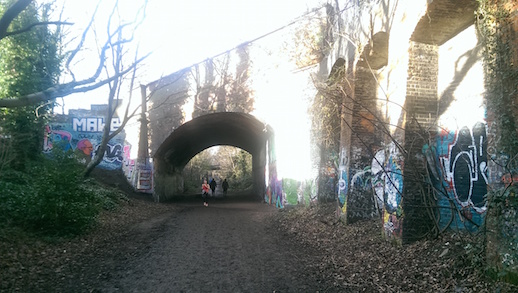 Words and pictures: Paul Dietrich.
Words and pictures: Paul Dietrich.
Travels With Charley by John Steinbeck is an account of a road trip the author undertakes across the US with his pet poodle, whose name informs the title.
It begins with a description of the restless spirit – the want for wandering we feel from youth and suffer from into middle age and maturity. The need to be a bum sometimes.
Having decided to hit the road, Steinbeck says the bum must settle on three things. A reason for going; the route to be taken; and the means by which it will be covered.
I like this description: the bum within us wants to leave; our higher aspect seeks the reason.
I am reading Travels With Charley two days after Christmas and decide that next morning I need a walk. Which is a less exciting way of describing a road trip on foot. But where? And for what reason?
The reason Steinbeck chooses for his road trip is to ‘search for America’ but that is little beyond my reach. I need something a little closer to home.
I’m involved in something called the Peckham Coal Line, which is a proposed park encompassing disused coal railway sidings in Peckham, south-east London.
While showing the route to some good people from the Inner London Ramblers, one of them mentioned the Parkland Walk in in north London, which also runs along a discontinued railway line.
Investigating this shall be my reason – an altogether less grand project than searching for the character of a nation but more than sufficient cause to pull on a pair of boots and stick an apple and a couple of pork pies in a shoulder bag with a map. And besides, I only have a day.
Next morning I am at the western side of Finsbury Park to pick up the southern end of the walk. I cross a footbridge over the railway and head up a muddy, car-wide track bordered by bramble, scrub and nettle that leads into and ash, birch and oak wrapped here and there in holly, ivy and wild clematis, also known as old man’s beard or, better still, traveller’s joy.
The route follows the Edgware, Highgate and London Railway line, which opened in 1867. In the 1930s it was planned to incorporate it into the Northern line but the coming of war put a stop to that and the last passenger train ran through in 1954.
It was used for freight transportation for a further ten years and closed in 1970, having seen out its days as a means of transporting Tube trains.
A scheme incorporating a considerable amount of housing was rejected at a public enquiry in 1979 and in 1984 the line was reborn as a 3km cycle and walkway, in much the same spirit as informs the Coal Line, it being conceived by right-minded people who believe in places where people can be a bum and wander.
Given the spirit of the age, it comes as little surprise to see there is less wandering going on when I visit than there is jogging, an altogether different endeavour – no less necessary, perhaps, but certainly more painful.
There are some people who appear as if running is as natural a movement as walking. These are light on their feet, moving with ease.Others are as ill-suited to jogging as a drunk is to ice-skating – all crooked elbows and lurched jerking from one heavy stepping to another.
As I walk along, overtaken by joggers, I see a black Labrador lollop past, its left front leg amputated at the shoulder. Despite stepping onto a ghost paw at each fourth step, like a drummer missing each of the second downbeats, it moves better than some of our joggers. Certainly no worse.
After a short time the route comes to a brick-built, arched bridge, taking me under the road. As is the nature of these things, its walls and alcoves are covered in bright graffiti, framed by curtains of ivy and vines – a pleasing scene so familiar across London there cannot be many of these red-brick canvases left undecorated.

A little further on, having passed under a simple, iron footbridge, I am greeted with the incongruous sight of two railway station platforms running for a couple of hundred metres each side of the path. This is the old Crouch End station.
The urge to climb up and walk along one of the platforms is irresistible so everyone I see does just that. Apart from the joggers, who are here for different reasons.
I’ve taken the history of the Parkland Walk from information boards along the route. In my experience, such boards can be well-written. Some fall a little short.
There’s one I’ve seen about wildlife to be found nearby that has an illustration of a bird labelled ‘wagtail’ without going so far as to say that it is of the pied variety and not its grey or yellow cousin.
The worst that comes to mind showed a mallard titled simply ‘duck’.
The signs on the Parkland Walk are, happily, well considered. One about trees says the lack of veteran specimens is because of the maintenance that used to be carried out by the railway companies and of the frequency of grass fires caused by sparks winging out from the steam trains.
Strange, to think of steam trains. Doing so telescopes the mind back to the past, forced to acknowledge that things were not always as they are and will be as changed again in the future – it is to become acutely aware of the present being bookended by an age that stretches back as far unknown as the future looms ahead unforeseeable.
It’s enough to make you pause for breath.
Beneath another brick bridge, beyond some exposed tree roots fixed in their horizontal creeping among unearthed brickwork, I stop short at the most striking silver birch – bleached bone in colour, beyond ghostly, as white as a black hole is dark and somehow unnerving in its singularity.
Just here a delicate twinkle announces the arrival of a flock of long-tailed tits, although flock seems too large a word. Perhaps ‘charm’ would be a better choice, although that’s something I may have heard in connection with finches. Either way, it’s a better fit than flock.
This southern stretch of the walk ends at a path leading up to street level at the northern end of Holmesdale Road where the old railway line disappears into two fenced-off tunnels, bricked in and now protected as bat habitats.
I want to have a closer look at the tunnels so walk on and notice a man up on the right, sitting cross-legged on the brickwork remains of what must be old steps down from the road.
He has his eyes closed and appears to be meditating so, having satisfied my curiosity about the tunnels, I retrace my steps quietly.
Had I timed things better I could have stopped in at The Boogaloo for a drink but at just gone midday it is not yet open. This is a shame as I’ve been here on a Saturday night when she was heaving and dancing, giddy with joy and exuberance.
It would have been nice to reacquaint myself with her in a mellower mood – you can’t really know a pub until you’ve seen her not long after she’s woken up as well as when kicking up her heels.
I peer through the pub window then carry on and reach Highgate Woods.
Great oaks stripped of foliage stretch black fingers into the silver sky and a whole host of grey squirrels, maybe two dozen in number, hop and fidget within a fenced-off enclosure, their rippling ermine tails flickering white at the corner of my eye.
Sitting on a bench to watch the squirreling, I think of Travels With Charley again and how Steinbeck’s poodle helps make the author’s acquaintance with people he meets along the way.
It follows a simple pattern. Steinbeck parks up his campervan and brews a coffee. Charley is released from the cab and sets to investigating whoever is around. In the time it takes Steinbeck to drink his coffee, Charley – who has fine judgement – has introduced himself to someone.
This allows Steinbeck – who being human is less adept at such straightforward introductions – to do the same by way of apologising for his dog’s nosiness.
This all leaves the way open for a friendly chat on the character of the dog, that itself leads nicely on to the kind of talk, big or small, that brings a glow when taken with strangers.
Sitting on the bench I get to wishing for a Charley of my own as I catch the eye of an elderly man walking by in a quilted coat and woolly hat. I say hello and for all the world it sounds as if he says an apologetic ‘sorry’ by way of reply.
A bird call alerts me to two treecreepers landing on an ash tree over my shoulder and just far enough away for me to be less than certain of my identification. But I can’t think what else they might be, staying flat to the trunk as they are, silhouetted against the white sky and as happy pointing their fine beaks to the heavens as below.
And I’m happy to watch them busy working the bark for a while until my phone vibrates in my pocket. It’s The Goff, back in town from the Midlands and keen to take a drink.
We agree at Bradley’s, Tottenham Court Road, knowing that because London half-empties itself for Christmas we will get the best of the place. My plan had been to complete the northern stretch of the walk up to Alexandra Palace but what are plans for, if not ditching.
Steinbeck touches on just such a notion and I like to think it applies whatever the journey. I resolve to discuss it with The Goff when I see him, for there’s no doubt we will be touching upon matters of the heart as well as many other things.
This is how he puts it:
‘A journey is a person in itself; no two are alike. And all plans, safeguards, policing and coercion are fruitless. We find after years of struggle that we do not take a trip; a trip takes us. Tour masters, schedules, reservations, brass-bound and inevitable, dash themselves to wreckage on the personality of the trip. Only when this is recognised can the blown-in-the-glass bum relax and go along with it. Only then do frustrations fall away. In this a journey is like a marriage. The certain way to be wrong is to think you control it. I feel better now, having said this, although only those who have experienced it will understand it.’